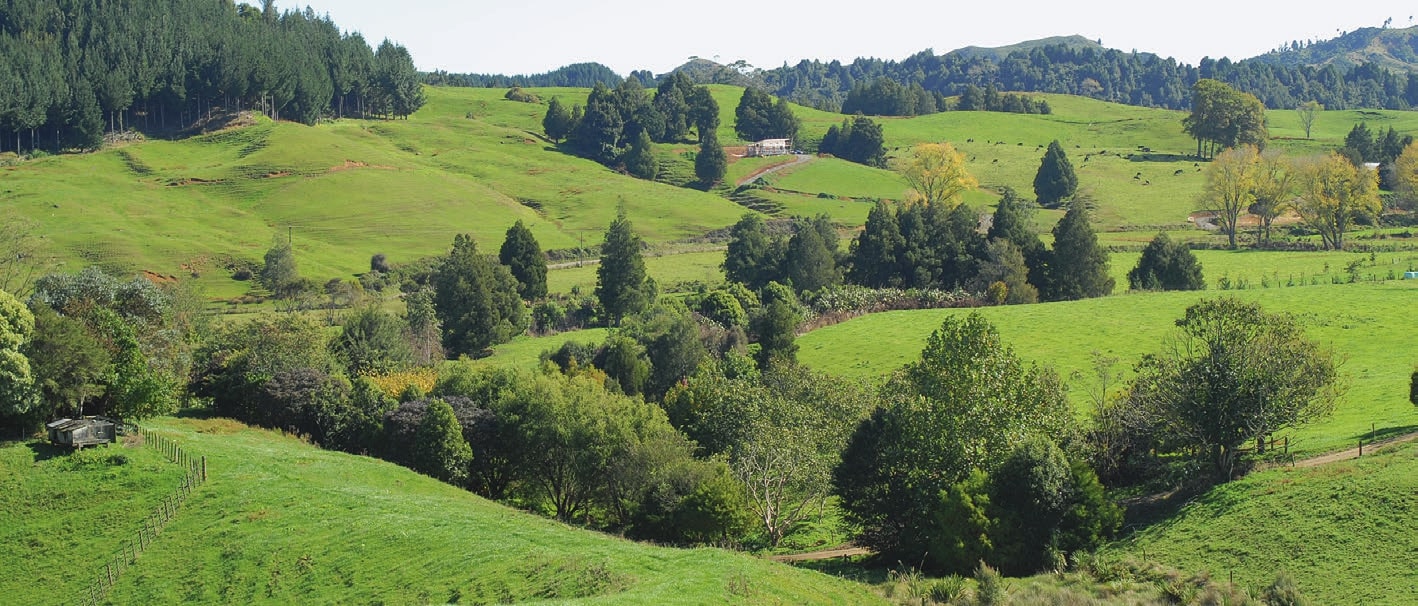The real value of the Forest Growers’ Levy
Hamish Levack, New Zealand Tree Grower February 2019.
Six years ago the future of the NZFFA was looking uncertain. By 2012 membership had fallen from its peak of over 4,000 in 1996 to around 2,000. The boom in small-scale afforestation during the early to mid-1990s had tailed off and as these forests passed through their silvicultural phase, people were less inclined to feel they needed the technical information available from the NZFFA.
Profits from growing trees did not seem to be as good as they were in the 1990s. The result had been far fewer people investing in new planting and therefore fewer new members. This has been exacerbated by the same trend which has been affecting many other organisations with increasing home and work obligations leaving people with less time to spare for other activities.
Over the past few years the NZFFA has become a lot stronger, has a much more certain future and has a significantly more influential role in forestry activities, particularly those relevant to owners of small forests.
This has not been due to a significant increase in membership, although the sharp decline in membership has been halted. Most of the improvement has been due to the introduction of the levy on harvested trees in 2013 known as the Forest Growers Levy.
Introducing the levy
Before 2013, most forest industry-good projects were financed by owners of large forests working via the NZ Forest Owners’ Association. A few projects were paid for by the NZFFA, but most of the 14,000 owners of small-scale, forests who were not members of either organisation did not contribute to any of them.
In 2012 it was proposed that introducing a levy on all timber as it was harvested would spread the financial load more fairly. To begin with a few small-scale forest owners did not back this suggestion on the basis that they thought it would be a tax which could be spent inefficiently on unnecessary projects. However, from the outset, the proposed levy had the full support of the NZFFA.
In 2013 voting for the levy took place and it obtained enough support for a Levy Order to be agreed by the government. An organisation which represented all forest growers was then needed and the Forest Growers’ Levy Trust was set up for this purpose. The NZFFA and the NZ Forest Owners Association selected an initial establishment board which changed into a formal board which has elected members. Currently two places out of six are reserved for small-scale forest owners to elect as their representatives.


How it has worked since 2013
Income from the levy was set at just 27 cents for every tonne of timber harvested. The budget for levy expenditure was set low enough to make sure it was workable although with the increase in harvesting over recent years, a total of around $9 million dollars is now being collected each year. As many of you will know this money is spent on a variety of projects covering research, safety, fire control, transport, biosecurity, training and the environment.
The Levy Trust Advisory Council recommends how the levy funds should be allocated via the various committees which have been set up, each committee having representatives of the large and small-scale forest growers. Secretarial services for all the committees are funded by the levy. Owners of large forests contribute the time and expenses of their representatives. Small-scale forest owners, who are currently all NZFFA members, contribute their time, but their travel and necessary accommodation expenses are reimbursed.
Except for the Small and Medium Enterprises Committee, each committee has a majority of representatives from large-scale forest owners, so in theory votes in favour of large-scale forest interests could hold sway. Because owners of large forests provide 80 per cent of the levy this is appropriate, but in practice there has seldom been any significant disagreement between the two types of representatives.
The Small and Medium Enterprises Committee was set up specifically to look after the interests of owners of small forests. It is chaired by the president of the NZFFA and is designed to make sure that projects of particular importance to owners of small forests and not covered lby other levy-funded committees do not miss out on consideration for levy funding.
Developing and maintaining a database
Before the levy came into being, the Wellington branch of the NZFFA had been working on finding out how many small-scale forest owners there were and where they are. Initially the estimate was that there were around 10,000 owners of small forests, but this was disputed. Thanks to a government grant, a significant amount of volunteer labour and the benefit of remote sensing technology, the research came up with a figure of around 14,000 small-scale forest owning entities. With many of these entities having multiple owners, it is estimated that there may be between 60,000 and 100,000 New Zealanders who have forestry investments − a significant number.
With the use of more levy funds to support this project, the database is being updated and improved and is a major reason why the NZFFA has become the representative organisation for all small-scale forest owners. The NZFFA now has responsibilities for more than its members, as well as more work to do.

The nett benefits of the levy
The levy has meant that there is now more money to protect all forests from fire and disease, more money to strengthen systems which reduce accidents and injuries, and more money to ensure that government does not unfairly discriminate against the forestry sector in transport or environmental matters. The levy has also helped to obtain greater amounts of additional funds from the government and other sources. A significant proportion of this money has been used for research ranging from improved tree genetics to more cost-efficient harvest systems for woodlots. The Forest Growers Research website has a lot more details on the beneficial forest research which is being carried out.
The NZFFA has also benefited directly. Since the levy was introduced, the organisation has received an average of about $100,000 a year from the Forest Growers’ Levy Trust mainly to fund ‘forest good’ activities. Projects which benefit all forest growers have included
- Improvements to the NZFFA website
- Subsidising the cost of the Tree Grower in return for articles on levy-funded projects and information of relevance to all forest owners being published,
- Providing electronic newsletters and targeted communications about field days and regional road shows
- Facilitating research for special purpose species
- Contributing to amendments to Building Codes for the use of timber other than pine
- Enhancing technology transfer, such as information on best practice regarding small-scale forest harvesting and other industry-good communication with small-scale forest owners and the general public.
The levy has also helped to train and expand the forestry workforce at all levels, and ensure that central and local government recognises the ecosystem services provided by forestry. Without levy-funded promotion, the public attitude to forestry would could turn against forest owners following incidents such as the Tolaga Bay debris flow. The levy helps to ensure that the forest sector continues to have a social licence to operate.
Strengthened voice of the NZFFA
It used to be hard for the NZFFA to provide the perspective of a small-scale forest owner in response to relevant government consultation papers, such as the Zero Carbon Bill, or to develop strategic plans. They do not have the staff resources which the large forest companies have and have always relied on volunteers along with a very limited budget, or none at all.
After the levy was introduced a small group, called the Forest Investors’ Action Group was established in Wellington. This group is not funded by the levy but has benefitted from the overall support the levy brings. They have been working closely with the NZ Forest Owners’ Association, the Forest Industry Safety Council, the Wood Processors Association, the Institute of Forestry, government officials, the leaders of other rural-based organisations and parliamentarians as well as obtaining some levy funds for projects.
This Forest Investors’ Action Group has been able to operate as a very useful NZFFA think-tank, to draft policy papers and responses to government consultation documents. Any such draft papers have had to be approved by the President and Executive before they became official, but the time-consuming background research and preparatory work has allowed the Executive to work much more efficiently and effectively. Examples of the work which the Executive has been able to do more effectively includes −
- Providing submissions to the government which have helped influence forest policy, such as improving the emissions trading scheme, not putting a levy on log exports and streamlining the implementation of the Overseas Investment Act regarding forest cutting rights
- Working with the Inland Revenue Department and the Ministry for Primary Industries to resolve the barriers to the grouping of small forests to achieve scale economies. As a result officials now agree that the ‘cost of timber’ clause of the current Income Tax Act which makes it difficult to buy or sell immature forests needs reform.
- Developing a project to obtain funds to consider how aggregation of small-scale forests to improve profitability.
- Communicating regularly with all the small-scale forest owners using the database mentioned earlier.
Other levy benefits
Substantial though they are, most of the benefits arising from levy contributions are difficult to quantify. Some examples include −
- The reduction in future logging fatalities
- The reduced risk of forest destruction by fire
- An increase in the social licence to operate,
- The reduced risk of the arrival of new forest pests.
Just one example will demonstrate that the owner of a small forest is getting good results from the levy. A minor component of the 27 cents a tonne was spent on research into improving the safety and efficiency of steep land harvesting − the majority of small-scale harvesting is on steep on hauler country. The result has been new mechanised systems which are estimated to save up to eight dollars a tonne of wood harvested.
It may be that the levy will mean that membership of the NZFFA will stabilise and even help it to increase. It has certainly meant that the organisation is much more effective and financially viable than it was to the benefit of members and to other owners of small forests.

 Farm Forestry New Zealand
Farm Forestry New Zealand